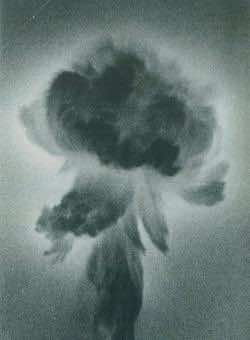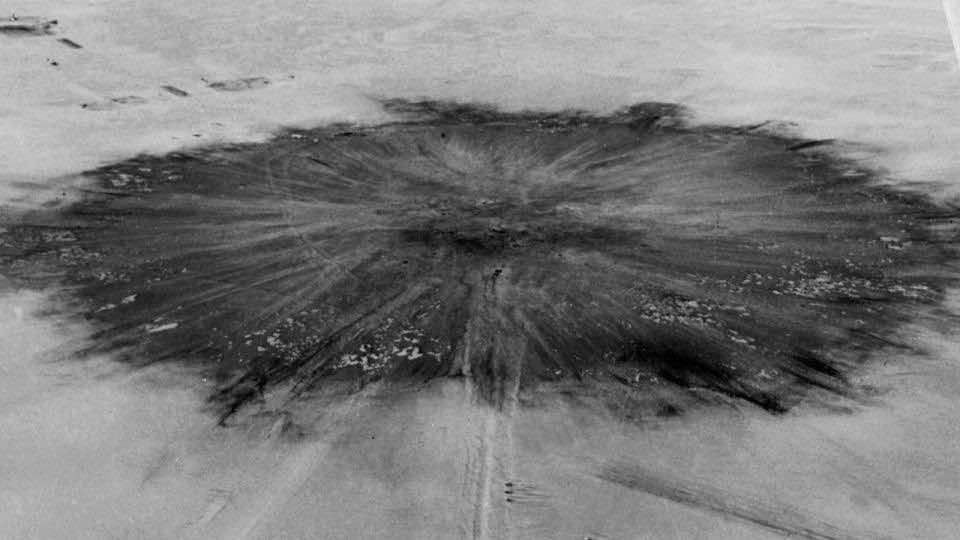On 13 February 1960, France conducted its first nuclear test, code-named “Gerboise Bleue” (Blue Desert Rat). It was conducted by the Nuclear Experiments Operational Group (GOEN), a unit of the Joint Special Weapons Command at the Saharan Military Experiments Centre near Reggane, Algeria in the Sahara desert region of Tanezrouft, during the Algerian War. The day marked the beginning of a series of four atmospheric nuclear tests at the Reganne Oasis. With an explosive yield of 70 kilotons, Gerboise Bleue was relatively large for a country’s first nuclear test, around four times as powerful as the Hiroshima bomb.
On 13 February 1960 at 7:04:00 UTC, the plutonium filled bomb was detonated atop a steel tower with an altitude of 100 metres. The command post was located 16 kilometres away from the blast. In order to study the immediate effects, military equipment was placed at varying distances from the epicenter, while jets flew overhead to take samples of radioactive particles. No journalists were allowed on site; instead, an eyewitness account was given to the French press, saying “the desert was lit up by a vast flash, followed 45 seconds later by an appreciable shock-wave”; an “enormous ball of bluish fire with an orange-red centre” gave way to the typical mushroom cloud.

As the atomic yield of a new bomb design cannot be precisely predicted, the French army planned an explosion between 60 and 70 kt. Gerboise Bleue was a total success, yielding the full designed power. However, because of the bomb’s irregularly high yield, some experts believe that the bomb may have been “overfilled with plutonium to assure success”.
Upon completion of the Gerboise test series, France switched to underground testing at another site in the Algerian Sahara, named In Ecker, where it conducted a further 13 nuclear tests until 1967. Subsequent French nuclear testing was conducted at French Polynesian atolls in the South Pacific, site of atmospheric thermonuclear tests, starting with the 2.6 megaton Canopus test in August 1968.



